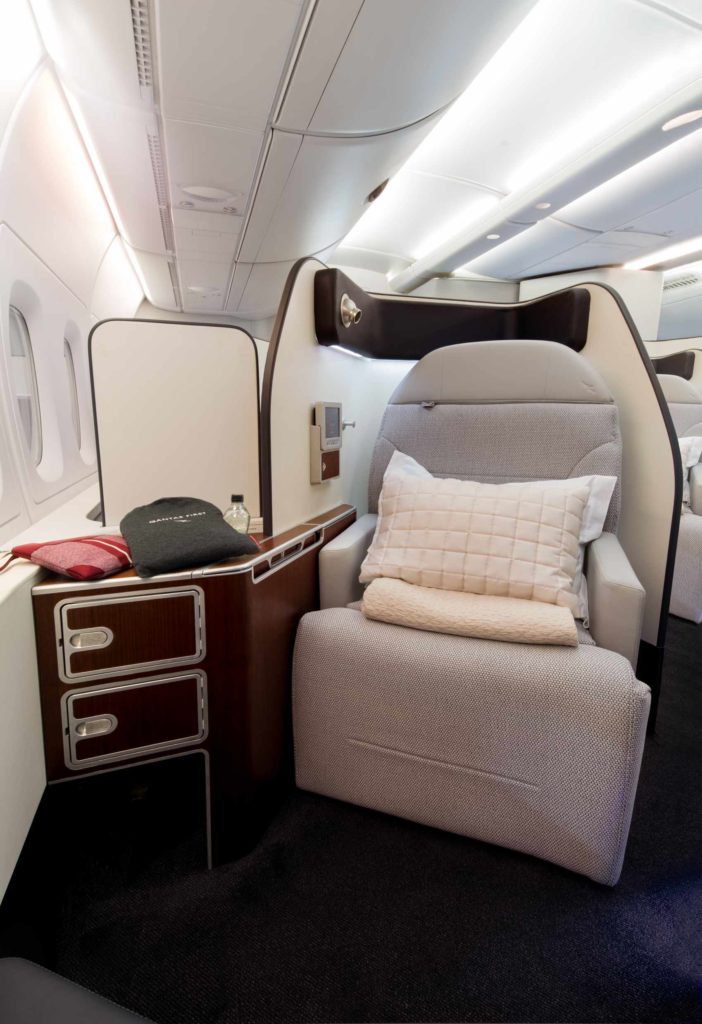Aerospace
Who invented the first business class on an airline? Business class history
Who invented the first business-class on an airline? Business class history

Who invented the first business class?
Qantas introduced the first real business class in 1979 and was the first airline to provide a full business class experience, with separate seating from economy and first class and a different class of fare.
The airline’s website states that “it invented business class in the 1970s,” and the current in-flight safety video also makes the same claim. The website also states that in 1979, “Qantas introduced Business Class air travel, becoming the first airline in the world to do so.”
China certifies C919 jet to compete with Airbus and Boeing(Opens in a new browser tab)
History of Business class
Traveling internationally by plane in the early 1970s meant choosing between a luxurious first-class experience and a protracted economy flight. The business class experience that we know today, however, started to take shape as the decade went on as airlines realized there was a potentially lucrative gap between those classes.
In the late 1970s, airlines started separating full-fare and discounted economy-class passengers. A number of other airlines, including Air Canada, quickly adopted the Full Fare Facilities (FFF) service that KLM introduced in 1976 for its full-fare economy-class passengers, allowing them to sit at the front of the economy cabin directly behind first class.
World’s Best Economy Class Airlines 2022(Opens in a new browser tab)
Business class, which was promoted as being superior to the economy but without the immense price of first class, which many businesses had already excluded from their travel policies, was able to achieve a better balance between comfort, convenience, and cost.
Why business class tickets are so expensive?
Depending on the airline, business class benefits include things like priority boarding, spacious seats with extra legroom, gourmet food service, premium beverages, access to lounges, and more. This explains why it is more expensive than an economy ticket.
Which airline has the widest seats in business class?
Singapore Airlines has long been associated with extravagant luxury in the air. Furthermore, the airline never fails to dazzle. The airline’s Business Class seats on its A350 and B777 aircraft are the world’s widest at 30 inches (or 75 cm).
Is it better to sit in the front or back of the business class?
Business class seats start filling up from front to back, so your best chances of scoring an empty seat next to you are to sit in the back of the cabin.

Aerospace
Boeing Transfers Rocket Stage to NASA, Paving Way for Human Moon Mission

Boeing has achieved a significant milestone by providing NASA with the second core stage of the Space Launch System (SLS) rocket.
This crucial component, crafted at NASA’s Michoud Assembly Facility (MAF), is set to propel the Artemis II crew into lunar orbit, marking humanity’s return to deep space after a 50-year hiatus.
The monumental Boeing-built rocket stage, the largest element of the Artemis II mission, will embark on a journey aboard the Pegasus barge, traveling 900 miles to NASA’s Kennedy Space Center.
Comparison of two legendary aircraft B777x vs B747 aircraft:Click here
Upon arrival, it will be meticulously integrated with other essential Artemis II components, including the upper stage, solid rocket boosters, and NASA’s Orion spacecraft within the iconic Vehicle Assembly Building. This intricate integration process is a vital step toward the eagerly anticipated Artemis II launch, slated for 2025.
“Boeing-built products helped land humankind on the moon in 1969, and we’re proud to continue that legacy through the Artemis generation,” remarked Dave Dutcher, vice president and program manager for Boeing’s SLS program. “Together, with NASA and our industry partners and suppliers, we are building the world’s most capable rocket and paving the way to deep space through America’s rocket factory in New Orleans.”
NASA, Lockheed Martin Reveal X-59 Quiet Supersonic Aircraft:Click here
The delivery of Core Stage 2 marks a significant achievement in the evolution of the SLS rocket. Towering over 200 feet and powered by four RS-25 engines, this core stage, coupled with two solid-fueled booster rockets, will generate a staggering 8.8 million pounds of thrust. This immense power is crucial to launching Artemis II and future missions into the vast expanse of space.
The SLS rocket stands unparalleled in its capability to transport both crew and substantial cargo to the moon and beyond in a single launch. Its extraordinary capacity will facilitate the delivery of human-rated spacecraft, habitats, and scientific missions to destinations including the moon and Mars, ushering in a new era of space exploration.
-

 Travel1 week ago
Travel1 week agoAir India to Expand US Operations with Three New Routes After a Decade
-

 Travel2 weeks ago
Travel2 weeks agoWhy We Should Avoid These Stamps in a Passport
-

 Airlines1 month ago
Airlines1 month agoInvestigations Reveal Fake Chinese Titanium in Boeing and Airbus Jets
-

 Tech4 weeks ago
Tech4 weeks agoChina’s CATL Plans 1,800-Mile Electric Plane Launch by 2027
-

 Airport3 days ago
Airport3 days agoTop 10 Largest Airports in the World by Size
-

 Aerospace4 weeks ago
Aerospace4 weeks agoChina’s Fighter Jets Turn Wings into Autonomous Drones
-

 Airlines4 days ago
Airlines4 days agoAir India Rolls Out A350s for Delhi-New York JFK and Newark Routes
-

 Defence3 weeks ago
Defence3 weeks agoBoeing Enhances Chinook with New Engines and Block II Upgrades at $96 Million








